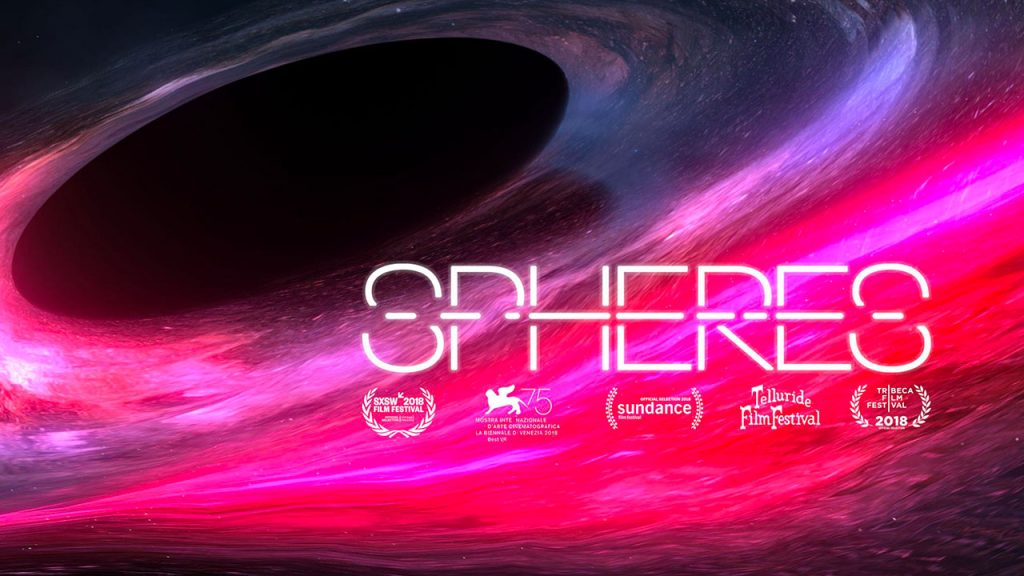This month at Venice VR will be officially launched the new version of his platform Kaleidoscope, a marketplace for immersive contents, with more features to work with artists and funding companies. The next step for XR?
Moving forward: welcome Kaleidoscope 2.0.
René Pinnell – In 2019 we’re taking everything that we’ve done – up to date – and moving it online: this is the new Kaleidoscope (link). What we’ve done so far was event based where we were bringing together artists and industry around marketplace events. And we’ve learned a lot about financing projects, and also executive producing some of them. But for us, it’s not enough.
R. P. – So we took all of those learnings and build a product that allows artists to engage with industry in the same way that they do at events, but this time online, and on an ongoing basis. We launched the first version of our new platform at Sundance this year. Today Kaleidoscope is up to 16000 members and the artists on the platform have raised over 27 millions dollars since we started. Average budget now for a VR project on Kaleidoscope is around 350 000 dollars – with the max being at the high end around 1 or 2 millions. With a success rate around 40 percent in terms of funding.
R. P. – So far the money was not raised on the platform directly, it’s was just use to start conversation between artists and the industry about funding. And with success! Members of Kaleidoscope have been featured at the major festivals in the world. Over 70 percent of the projects at Sundance are made by Kaleidoscope members. Our very high quality network and members who applied are reviewed by their peers. It’s a self-selecting group that we wanted to push forward with more features and the integration of the funding directly online. Our goal is to offer a new set of features that will improve artists ability to build momentum for their projects and to generate that inbound interest from the industry. And on the other side to help distributors and content funders to discover projects that meet their requirements.
R. P. – This is what we learned: building momentum and exposure for you and your work is key, as well as identifying who’s the right person to talk to at the right company to help support the specific project. It’s really about filtering and finding the right project, depending if you’re looking for VR film or gaming, LBE/multiplayers experience or in store content. Everything will be centralized in one place now: Kaleidoscope 2.0.
Creating new opportunities for the XR industry and creators
R. P. – With our platform, we’re focused on opportunities for everyone. These can be anything from an artist residency – or a grant – to a showcase or festival, or even to submit directly your project. One thing we announced at New Images is that we’re signing on to executive produce five projects amongst those submitted. We already produced about 10 projects in between 2016 and 2017, which have done really well – over three million dollars were raised, including SPHERES or VESTIGE with Atlas V. Even if our priority is to build our platform that helps artists raise money on their own, we always wanted to executive produce a handful of them because it will force us to stay close to the problem that we’re trying to solve. Those first 10 projects were tremendously helpful for us to understand the problems and build a better model for what is coming next.

R. P. – We already picked one up at NewImages (more infos): NEPHELE by Alexandre Perez, produced by Floréal Films (France). Our collaboration with the festival aimed to select the one that we feel like is really pushing the medium forward artistically. We’re looking for innovation first, and something we haven’t seen before. But also a real vision as for distribution and how to build/reach the audience. We need to focus on the business perspectives, and to make money from it, in order to get these projects in the market. And to get people from the press to write about it, which hopefully will be translated into downloads or ticket sales. One question is about sales territory, and how to understand every peculiarities outside of a common worldwide distribution. How to distribute in France, or Germany, UK…
R. P. – Today there is no right way to do this. Some projects are breaking out, like GLOOMY EYES, BATTLESCAR, SPHERES, BEAT SABER. We need to explore where there are some similarities between them that we can extrapolate. But there’s relatively few data points right now to do so. The biggest thing is just understanding who the players are because one of the challenges that you face as an artist – and one of the things that we’re trying to help artists with on our platform – is that the industry is moving really fast. It’s really hard to stay up to date, and that’s where the new Kaleidoscope is here for.

Location based opportunities: the right path?
R. P. – LBE (Location Based Experience) has been a big trend, with a lot of propositions from creators and producers; but not a lot of funding can be found in this area, as it’s still risky. There’s not a whole lot of players that can fund original titles for their use. For the VOID and Dreamscape, it’s mostly internal projects from big well-known IP. You don’t find a sort of third party indie developers that are getting funding for LBE. If you want to produce an experience there, think adaptation and IP first. And look for money outside the XR industry. Basically the LBE part of the industry is very much like traditional cinema distribution. The only problem is that there’s no production standard.
R. P. – It’s very expensive and time consuming to try distribute an LBE experience. Most people are trying to do something that’s pretty much like an at home experience in an LBE context. But both don’t have the same standards. And most of the VR arcade places don’t have the budgets to do a full experience that could justify a high price ticket. That’s where a good IP can help. I think the answer that can help here is giving haptics and more sensory impact and inputs: things that you just couldn’t possibly do at home. But we have to define standard to create a real distribution industry.
R. P. – You can charge the same price for a immersive/interactive experience, as you can pay a ticket for a Broadway show, skydiving or activities like that with a high impact and unique opportunity. See the with the space you control everything like Marshmallow Laser Feast’s SWEET DREAMS at Sundance this year. Of course it’s just few days in a festival, and we hope to discover it elsewhere after that, but there is magic happening. That’s like substantively an order of magnitude wise, more impactful, immersive, different than you can get anywhere else. People will pay for it. And it solves 2 problems: the low bandwidth issue and one environment which creates its own standard. Finally that is the model I’m most interested in.




Leave a Reply
You must be logged in to post a comment.